Christmas is undoubtedly a time for family, festivities, and food. We all know it wouldn’t be Christmas without turkey, stuffing, and cranberry sauce.
But what about blood sausage, mince pies, and a spit-roasted pig?
From Ethiopia to Estonia, here are 20 traditional dishes from the world’s festive feasts.
Poland’s barszcz.
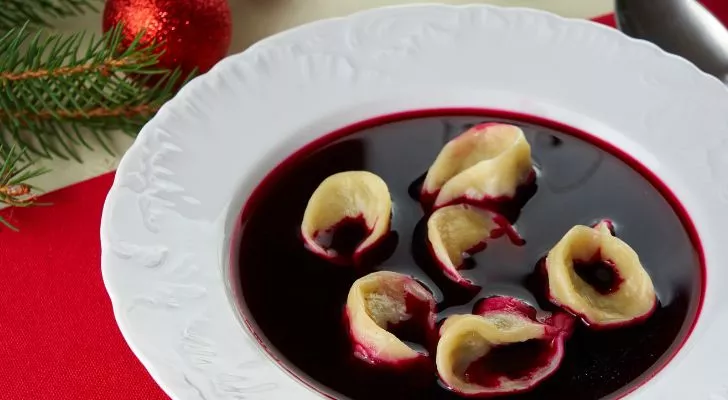
The Polish have their traditional Christmas dinner on Christmas Eve. Known as Wigilia, this feast consists of 12 different dishes and desserts to represent the 12 Apostles. A mix of meat, fish, and vegetarian dishes, Wigilia traditionally begins with barszcz.
Barszcz is a sour soup made primarily from fermented beetroot, wild mushrooms, and vegetable broth. It is served with small dumplings called uszka (“little ears”) that have been stuffed with a mix of mushrooms and fried onion.
Iceland’s laufabrauð.
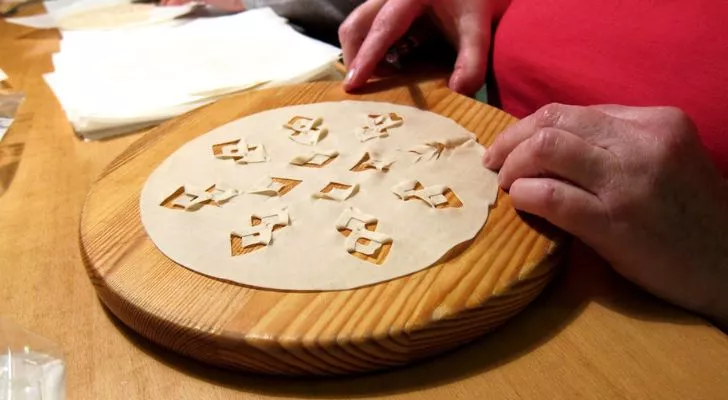
Laufabrauð, or Icelandic leaf bread, is a thin, circular fried bread decorated with leaf-like geometric patterns.
A simple dough is made with flour, butter, milk, and sugar before being kneaded and rolled out as thinly as possible. The dough is then fried in hot oil, resulting in a crispy, cracker-like texture.
The bread’s unique decoration is created with a laufabrauðsjárn, a small rolling tool, and then intricately folded. Traditionally, the decorating would be a family undertaking where all generations can come together and participate.
Norway’s nissegrøt.
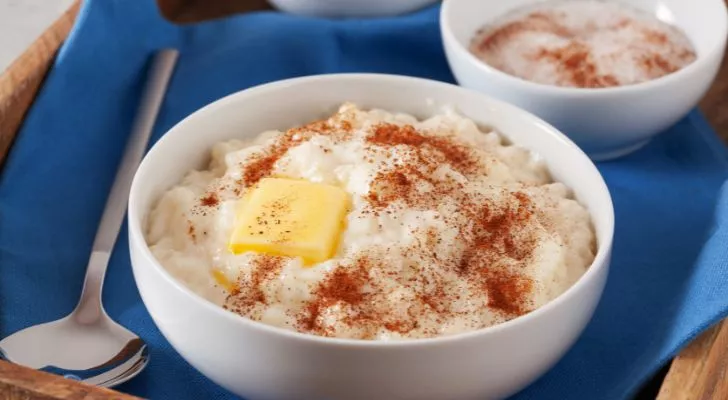
Did you know Norwegian Christmas has its own version of Santa Claus? He’s called Fjøsnisse, and instead of cookies and milk, you give him nissegrøt.
Nissegrøt is a rice pudding made with milk, butter, and cinnamon. A bowl is given to Fjøsnisse so that he will look after your barn animals and stay out of mischief.
For everyone else, nissegrøt is served between breakfast and dinner on Christmas Eve. But remember, a single almond is hidden in one of the bowls, and if you find it, you win a marzipan pig!
Portugal’s lampreia de ovos.
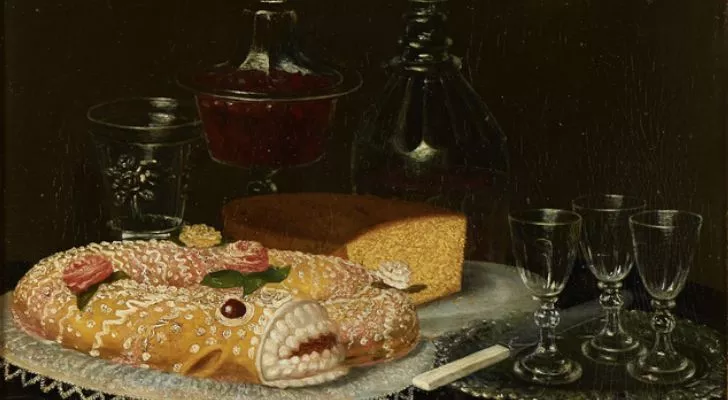
Portugal is famous around the world for its egg-based desserts, their legendary pastel de nata custard tart being one of them. But what do you get when you combine 50 egg yolks, sugar syrup, and almonds?
Well, for the Portuguese, you’ll get a bright orange Christmas dessert that looks like a lamprey.
The lamprey fish has a long and important history in Portugal. It was the most affordable red meat replacement for the poor and hungry for hundreds of years.
So, in honor of this eel-like fish, families across the country recreate its likeness into a celebratory dessert.
Denmark’s brunede kartofler.
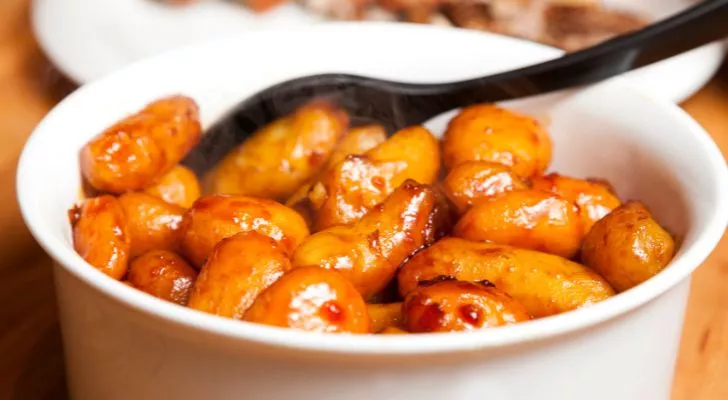
Having a form of potato on the Christmas table is a must. We are familiar with roasting, mashing, and making them into salads, but have you ever had them caramelized?
In Denmark, it is more traditional to peel, boil, and coat your potatoes in a mixture of hot butter and sugar. After being submerged in this hot caramel bath for around 10 minutes, the result is slightly brown, sugary-sweet, golden nuggets of pure joy!
Brazil’s farofa.
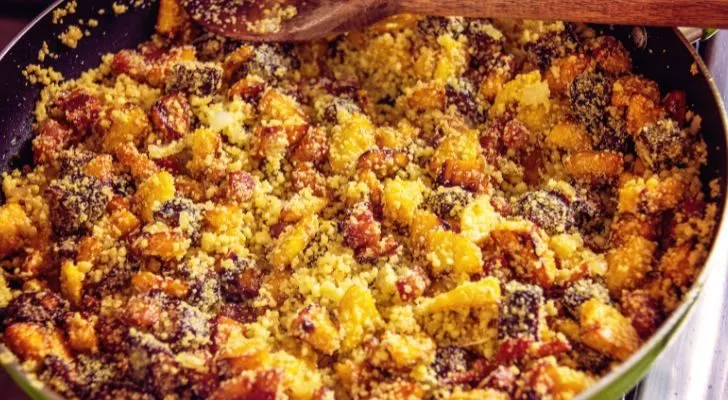
For Brazil, Christmas dinner doesn’t begin until late on Christmas Eve. It typically includes many separate dishes, such as roast turkey, garlic kale, and potato salad.
However, there is one recipe that always makes an appearance: farofa!
Similar to Western-style stuffing, farofa is a breadcrumb-like mix of toasted cassava flour dripping with butter and garlic. But just like our stuffing, everyone and their grandmother has their own unique take on its exact recipe, adding things like bacon, bell peppers, and fruit.
Colombia’s natilla.
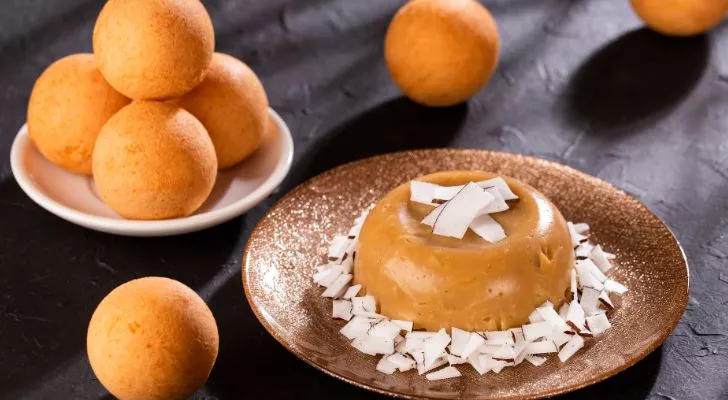
Natilla is a sweet, custard-like dessert that is a popular part of a Colombian Christmas dinner. It can either be served alone or alongside buñuelos (a kind of cheese fritter) and hojuelas (a dish of fried dough).
The key to a traditional natilla is panela. Made from sugar cane, panela is the sweet brown ingredient that gives natilla its caramel color and characteristic flavor. In some parts of Colombia, Aguardiente liquor is added to provide an anise flavor.
Estonia’s verivorst.
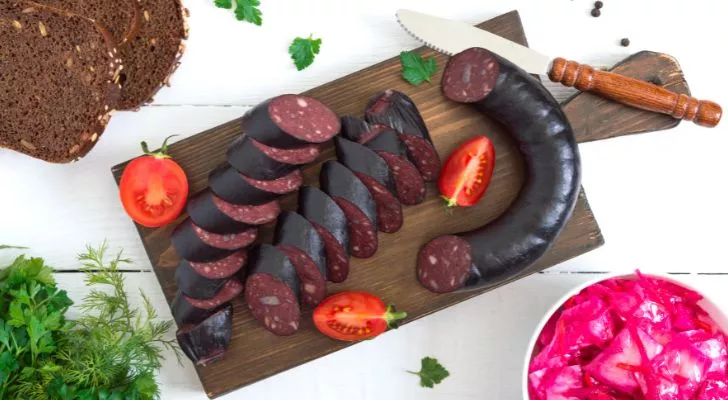
Verivorst is the national dish of Estonia and a favorite amongst families at Christmas.
Translated directly as “blood sausage,” verivorst is made of pork, barley, onions, allspice, marjoram, and (you guessed it) pig’s blood.
Roasted together with potatoes and pieces of pork, these sausages are usually accompanied by butter, sour cream, and sauerkraut on the side.
South Africa’s malva pudding.
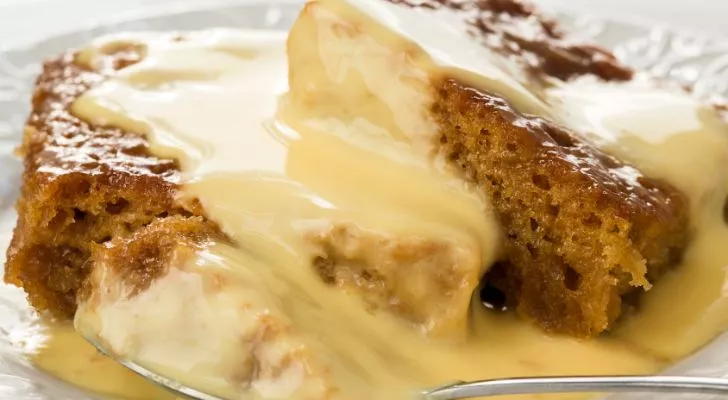
Malva pudding (or malvapoeding) means marshmallow pudding in Afrikaans. This aptly named dessert gets its title based on its marshmallow-like texture and honey-toned flavor.
Although the origin of this sweet and spongey cake is unclear, it is obvious why so many South Africans adore it.
Made with apricot jam and a dash of vinegar (for extra caramelization), the pudding mixture is then baked before getting a final topping of cream sauce for extra gooeyness.
Bonus fact: Oprah Winfrey’s personal chef served malva pudding at The Oprah Winfrey Leadership Academy’s first Christmas dinner in 2006.
Ethiopia’s doro wat.
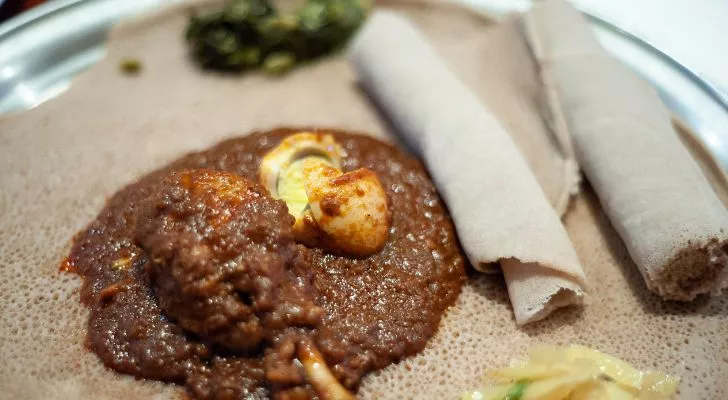
Orthodox Ethiopians celebrate Ganna (Ethiopian Christmas) on January 7. Before this, many begin a 43-day fast on November 25, which is broken with a celebratory dish called doro wat.
Doro wat is a spicy stew containing meat, vegetables, and eggs served atop injera, Ethiopia’s beloved fermented flatbread.
The secret to the perfect doro wat is berbere, an Ethiopian spice mix including cardamom, fenugreek, and coriander mixed with lots of clarified butter.
Luxembourg’s boxemännercher.

We are all familiar with gingerbread men, but have you ever tried a boxemännchen?
In Luxembourg, it is a tradition within the Christmas period to eat little brioche men called boxemännchen. These small man-shaped breads are very popular with both children and adults and are often given as gifts on St. Nicholas’ Day.
Displayed in bakeries throughout the country, these soft and sweet pastries are glazed with either chocolate or icing sugar and decorated with sultanas, sweets, and sometimes a tiny candy pipe.
England’s mince pies.

For the English, Christmas wouldn’t be complete without one or two (or more) mince pies. Don’t let the name fool you; there isn’t a single piece of minced meat in sight!
Encased in buttery shortcrust pastry, this sweet pie is filled with a mixture of dried fruits, sugar, spices, and brandy. Either topped with an additional pastry lid or sprinkled with icing sugar, you will find these seasonal sensations in every store and bakery in England.
Eaten hot or cold, minced pies are classically served with a dollop of brandy butter or clotted cream and given as a dessert or indulgent snack.
Italy’s festa dei sette pesci.
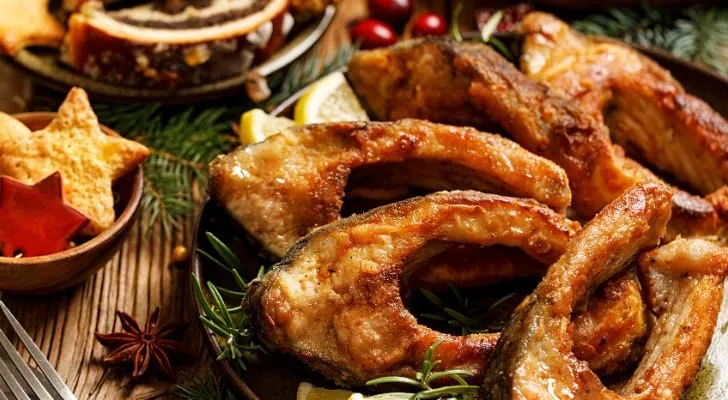
Italy and food go together like kissing and mistletoe, so it is no surprise that Italians go big on Christmas dishes.
Festa dei sette pesci translates to “the feast of the seven fishes” and is just as impressive as it sounds.
Eaten on Christmas Eve, seven kinds of unique fish and seafood dishes are presented to hungry family members after attending midnight mass.
Recipes for these dishes are learned and passed down from generation to generation and regarded as a family secret.
The Philippines’ lechon.
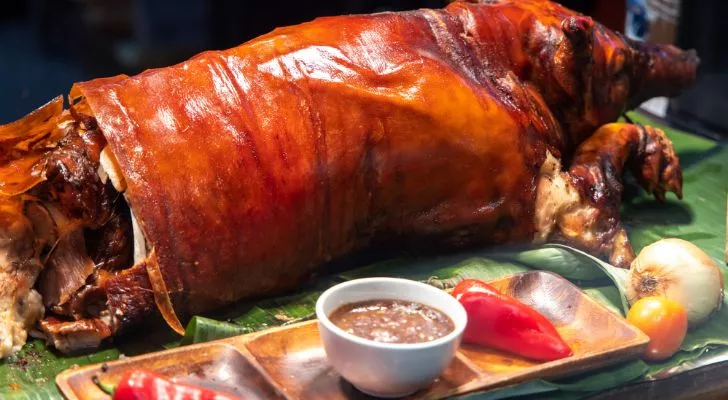
If you are at a celebratory event in the Philippines, lechon will most likely be on the menu.
From wedding receptions to town fiestas, Christmas dinner is no exception when making this whole spit-roasted pig feast.
Cooked over charcoal and served with an array of dips and sauces, family members and friends gather around to chow down on this meaty marvel.
Any leftovers are cooked up again into a stew called lechon paksiw and enjoyed in further celebrations.
India’s achappam.
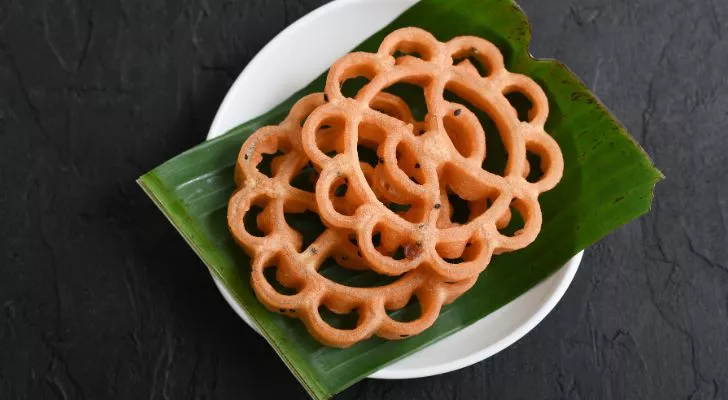
Achappam, or “rose cookie,” is a sweet snack served in Kerala, a southern state in India. Popular amongst the Christian population, achappam is commonly made during Christmas, although it can appear in other Christian celebrations such as Easter.
These delicious treats have a delicate design while still delivering an impressive crunch.
Using a rose-shaped mold, batter made from egg, sugar, rice flour, and coconut milk is poured into a pan of hot oil and then fried until golden brown.
Hawaii’s lomi-lomi salmon.
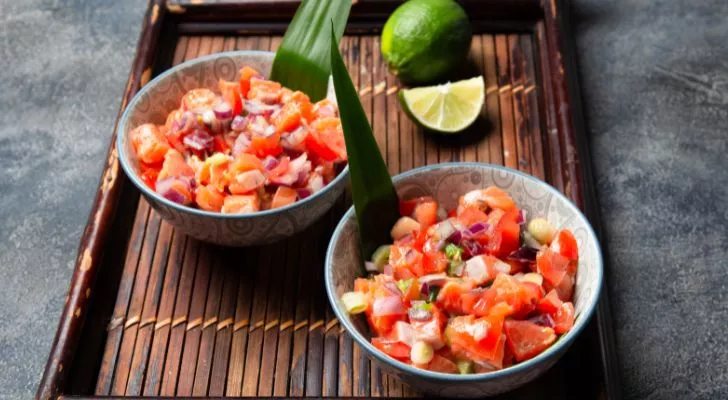
When in Hawaii, you wouldn’t say you were hosting a Christmas dinner; instead, you would say you are having a Christmas lū‘au! And what would be the perfect side dish for your lū‘au? Lomi-lomi salmon, of course!
Introduced by Western sailors many years ago, this dish is a fresh tomato and raw salmon salad. Diced into small chunks and mixed with sweet Maui onions, this refreshing fish dish can also be given a spicy kick with red chili flakes.
Always served cold (sometimes even with crushed ice), this really does sound like a festive meal best served on a sunny beach in Hawaiian paradise.
Greece’s christopsomo.
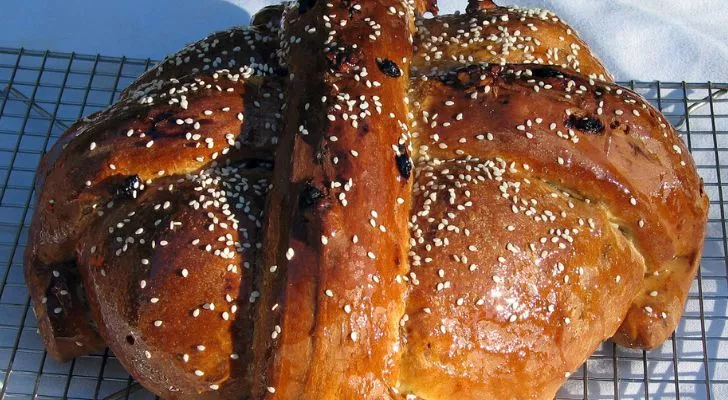
Making christopsomo is a tradition that dates back thousands of years in Greece. Considered a sacred part of Christmas preparations, christopsomo literally means “Christ bread” and is always blessed before being eaten.
Mahleb and anise give christopsom its distinctive flavor, while honey and raisins give the dough sweetness. Even so, recipes will vary from household to household, with many other ingredients being added.
The bread is decorated with nuts and spices, alongside different details and patterns shaped from leftover dough, always featuring a cross on top. The result is an elaborate-looking loaf full of sweet fruits and warm-tasting spices.
Finland’s joulukinkku.
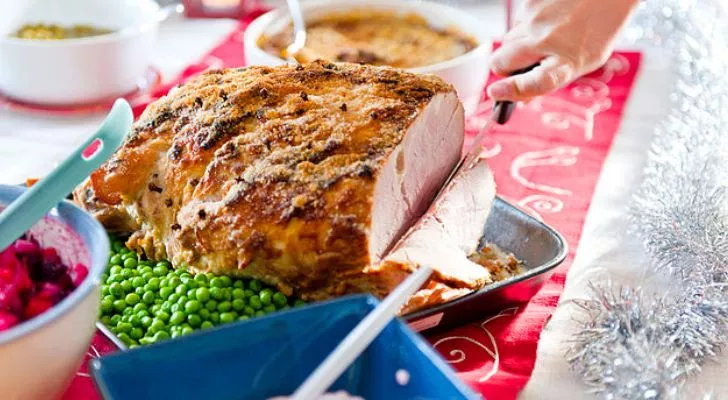
Instead of turkey being the table’s centerpiece, the Finnish crown baked ham as the star of their show. Known as joulukinkku, this huge piece of pork is glazed with mustard, brown sugar, and breadcrumbs, then slowly roasted in the oven for hours (sometimes overnight!).
If any ham is left after Joulupöytä (the Finnish word for Christmas dinner), it is usually added to soups and broths for the days to come.
Venezuela’s hallacas.
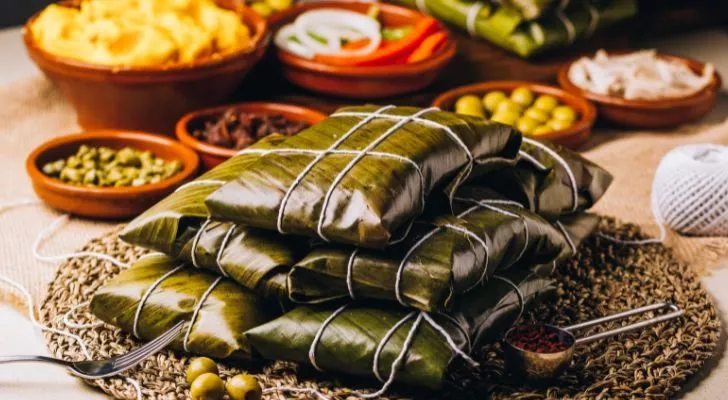
Hallaca is a must for Venezuelans at Christmas. Bringing together the whole family to participate in its preparation, making hallacas is a labor of love.
An array of Ingredients such as pork, chicken, raisins, olives, capers, onions, and pimentos are finely chopped and mixed into a corn dough.
The mixture is then wrapped in a banana leaf and held together with string before being steamed until cooked through.
Jamaica’s black rum cake.
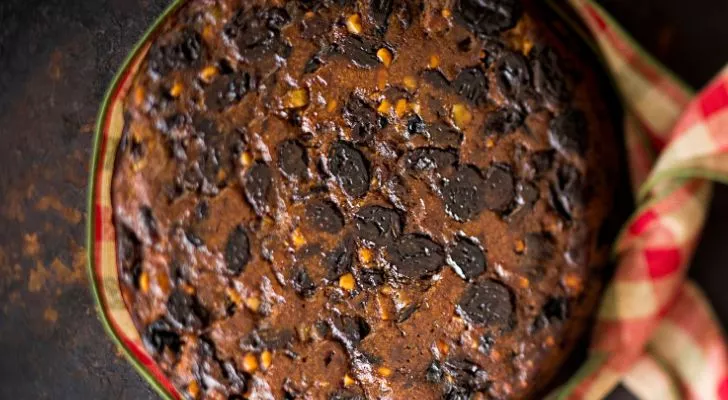
Kind of like fruit cake’s boozy Christmas cousin, Jamaican black rum cake is a dessert worth knowing about. Dark in color and rich in flavor, this dessert is fruity, spicy, and full of Caribbean rum (yum!).
The main stars of this cake are its combination of rum and wine-soaked fruits. Dried raisins, cherries, sultanas, and prunes are left to soak for up to a year to generate as much flavor as possible.
Once at optimum “ruminess,” they are mixed into a dark cake batter spiced with cinnamon, nutmeg, and allspice.
From tropical islands to mainland Europe, Christmas dishes are as unique as the place they are made in.
Whether you spice up a stew after a 43-day fast or leave a bowl of rice pudding out for a barn-dwelling Santa, traditions are what Christmas is all about.
Why not try some international nibbles and see if you’d swap your stuffing for farofa or gingerbread men for boxemännercher?


















